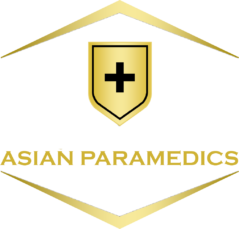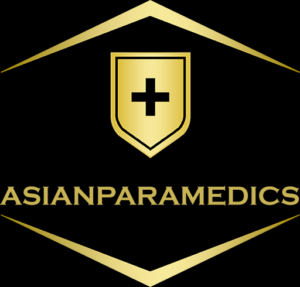Blood Banking MCQs:
These 300+ multiple-choice questions (MCQs) are designed to test your knowledge and understanding of various aspects of blood banking, a critical component of transfusion medicine. Blood banking involves the collection, processing, testing, storage, and distribution of blood and blood components to ensure their safe and effective use in medical treatments. The questions cover a wide range of topics, including blood typing, compatibility testing, transfusion reactions, blood component therapy, and the management of adverse events. By answering these questions, you will gain a deeper insight into the complexities and importance of blood banking in modern healthcare.

a. Bombay phenotype (Oh) ✅
b. T activation
c. A3 red cells
d. positive indirect antiglobulin test
a. can be classified by reactivity with Ulex europaeus
b. are agglutinated by most adult sera ✅
c. are always an acquired condition
d. autocontrol is always positive
| Test | Patient’s cells vs | Patient’s serum vs |
|---|---|---|
| anti-A | 4+ | 1+ |
| anti-B | 0 | 4+ |
| A1 cells | N/A | 1+ |
| B cells | N/A | 4+ |
| Test | IS | RT |
|---|---|---|
| screening cell I | 1+ | 2+ |
| screening cell II | 1+ | 2+ |
| autocontrol | 1+ | 2+ |
a. A2 with anti-A1 ✅
b. cold alloantibody
c. cold autoantibody
d. acquired-A phenomenon
| Test | Patient’s cells vs | Patient’s serum vs |
|---|---|---|
| anti-A | 4+ | 1+ |
| anti-B | 0 | 4+ |
| A1 cells | N/A | 1+ |
| B cells | N/A | 4+ |
| Test | IS | RT |
|---|---|---|
| screening cell I | 1+ | 2+ |
| screening cell II | 1+ | 2+ |
| autocontrol | 1+ | 2+ |
a. test serum against a panel of group O cells
b. neutralization
c. perform serum type at 370C ✅
d. elution
| Test | Cell testing | Serum testing |
|---|---|---|
| anti-A | 0 | 4+ |
| anti-B | 4+ | 2+ |
| anti-D | 0 | N/A |
| autocontrol | 0 | N/A |
a. draw a new blood sample from the patient and repeat all test procedures
b. test the patient’s serum with A2 cells and the patient’s red cells with anti-A1 lectin ✅
c. repeat the ABO antigen grouping using 3x washed saline-suspended cells
d. perform antibody screening procedure at immediate spin using group O cells
a. an unexpected antibody
b. rouleaux ✅
c. agammaglobulinemia
d. Tn activation
a. several different dilutions of anti-D serum
b. anti-D serum followed by washing and antiglobulin serum ✅
c. anti-Du serum
d. antiglobulin serum
| Test | Forward group | Reverse group |
|---|---|---|
| anti-A | 4+ | 0 |
| anti-B | 0 | 2+ |
| anti-A1 lectin | 4+ | N/A |
| A1 cells | N/A | 0 |
| A2 cells | N/A | 2+ |
| B cells | N/A | 4+ |
a. negative
b. positive with all screen cells at the 370C phase
c. positive with all screen cells at the RT phase; autocontrol is negative ✅
d. positive with all screen cells and the autocontrol cells at the RT phase
| Test | Forward group | Reverse group |
|---|---|---|
| anti-A | 0 | 0 |
| anti-B | 0 | 3+ |
| A1 cells | N/A | 0 |
| B cells | N/A | 3+ |
a. loss of antigen due to disease
b. acquired B
c. phenotype Oh “Bombay” ✅
d. weak subgroup of A
a. the father is homozygous for D
b. the mother is heterozygous for D
c. the father is heterozygous for D ✅
d. at least 1 of the 3 Rh typings must be incorrect
a. complement ✅
b. anticoagulants
c. preservatives
d. penicillin
| Step | Action |
|---|---|
| 1 | PATIENT SERUM + REAGENT GROUP “O” CELLS |
| 2 | INCUBATE RED FOR AGGLUTINATION |
| 3 | WASH |
| 4 | ADD AHG AGGLUTINATION OBSERVED |
a. add “check cells” as a confirmatory measure ✅
b. identify the cause of the agglutination
c. perform an elution technique
d. perform a direct antiglobulin test
| Test | 37oC IAT |
|---|---|
| screening cell I | 0 3+ |
| screening cell II | 0 3+ |
| autocontrol | 0 3+ |
a. rouleaux
b. a warm autoantibody ✅
c. a cold autoantibody
d. multiple alloantibodies
a. recipient alloantibody
b. recipient autoantibody ✅
c. donors have positive DATs
d. rouleaux
| Test | Result |
|---|---|
| Hemoglobin | 7.4g/dL (74g/L) |
| reticulocyte count | 22% |
| Direct Antiglobulin Test AB Screen –IAT | polyspecific: 3+ SC I: 3+ IgG: 3+ SC II: 3+ C3: 0 auto: 3+ |
a. cold hemagglutinin disease
b. warm autoimmune hemolytic anemia ✅
c. penicillin-induced hemolytic anemia
d. delayed hemolytic transfusion reaction
a. red cells were overwashed
b. centrifugation time was prolonged
c. patient’s serum was omitted from the original testing ✅
d. antiglobulin reagent was neutralized
a. patient has an antibody directed against a high incidence antigen
b. patient has an antibody directed against a low incidence antigen ✅
c. donor has an antibody directed against donor cells
d. donor has a positive antibody screen
a. group A patient mistyped as group O
b. unexpected red cell antibody in the donor unit
c. Rh-negative donor unit mislabeled as Rh-positive
d. recipient antibody directed against antigens on the donor red cells ✅
| Test | IS | 37oC | IAT |
|---|---|---|---|
| screening cell I | 0 | 0 | 0 |
| screening cell II | 0 | 0 | 0 |
| screening cell III | 0 | 0 | 0 |
| Crossmatch donor 1 | 2+ | 1+ | 1+ |
| Crossmatch donors 2,3,4 | 0 | 0 | 0 |
a. single alloantibody ✅
b. multiple alloantibodies
c. Rh incompatibilities
d. donor 1 has a positive DAT
a. recipient’s red cells possess a low frequency antigen
b. anti-K antibody in donor serum
c. recipient’s red cells are polyagglutinable
d. donor red cells have a positive direct antiglobulin test ✅
a. the patient has an antibody against a high-incidence antigen ✅
b. the incompatible donor unit has a positive direct antiglobulin test
c. cold agglutinins are interfering in the crossmatch
d. the patient’s serum contains warm autoantibody
a. repeat the ABO grouping on the incompatible unit using a more sensitive technique
b. test a panel of red cells that possesses low-incidence antigens
c. perform a direct antiglobulin test on the donor unit ✅
d. obtain a new specimen and repeat the crossmatch
a. refuse to release any blood until the patient’s sample has been typed
b. release A Rh-negative Red Blood Cells ✅
c. release O Rh-negative Red Blood Cells
d. release O Rh-positive Red Blood Cells
a. AB, Rh-positive
b. A, Rh-negative
c. A, Rh-positive
d. O, RH-negative ✅
a. B, Rh-positive ✅
b. B, Rh-negative
c. A1B, Rh-positive
d. O, Rh-negative

